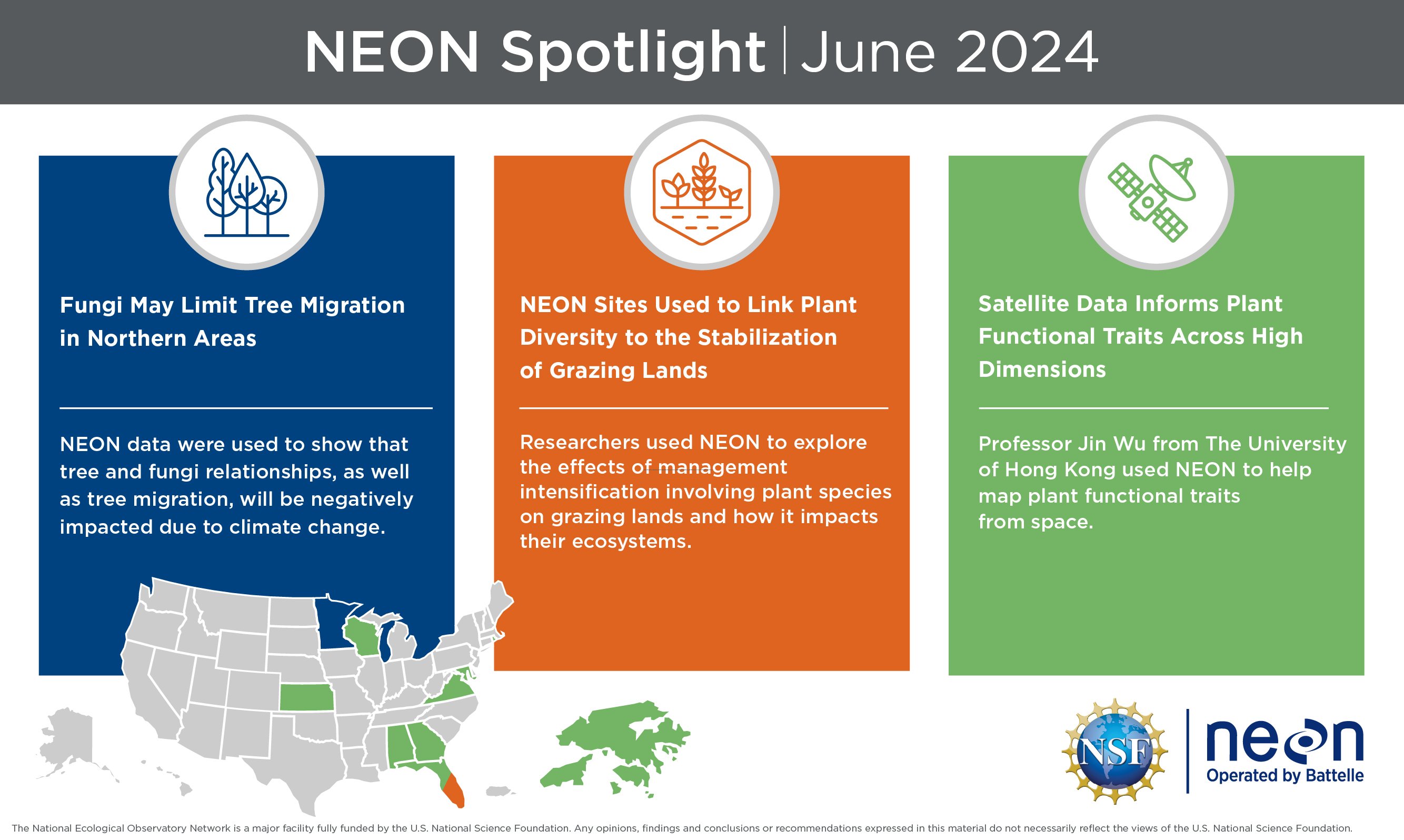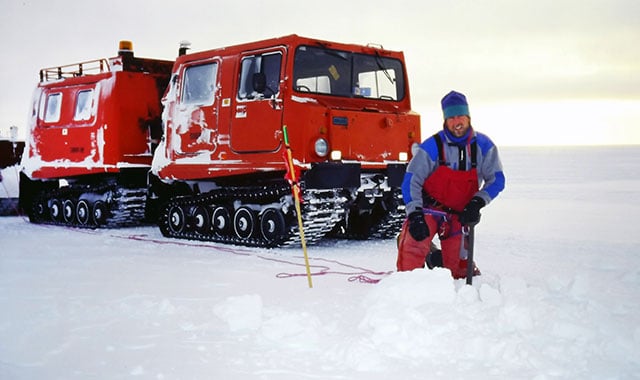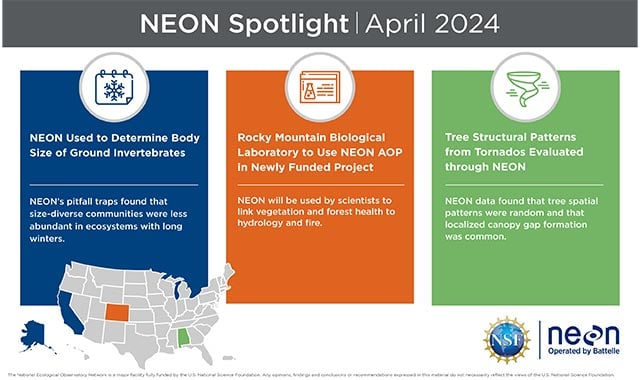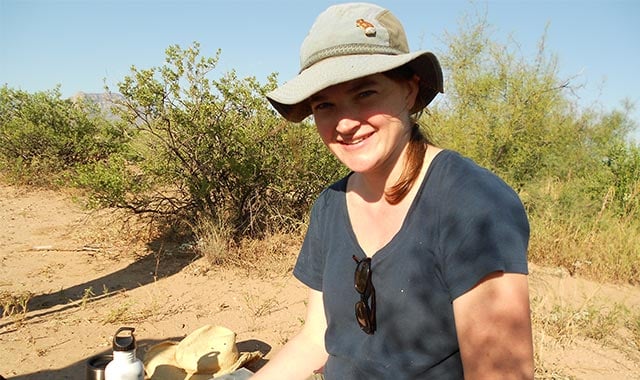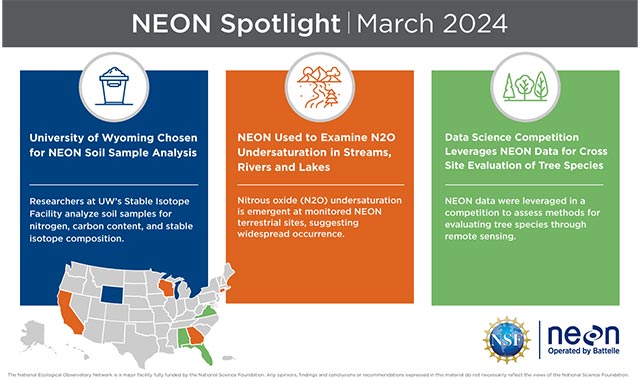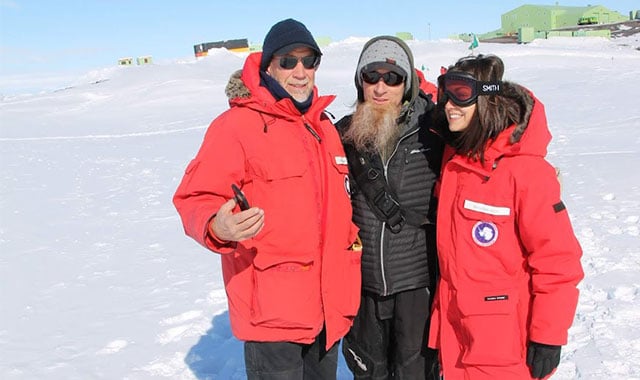November 2022: What’s New with NEON?
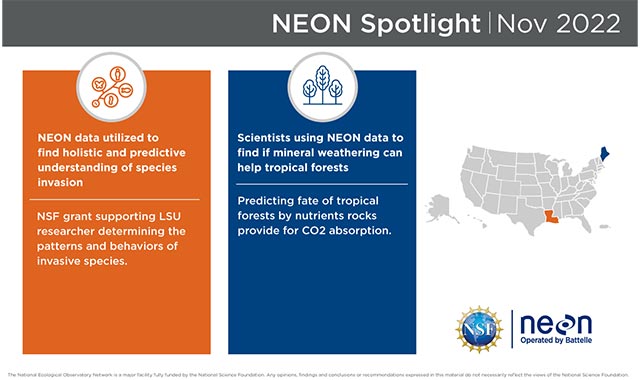
November’s NEON Spotlight highlights new studies that demonstrate how scientists are leveraging NEON data in their efforts to expand the bounds of ecological understanding. This month we are sharing stories that show how scientists are using NEON data to find if mineral weathering can help tropical forests, and how they can understand species invasion. NEON data continues to be a crucial source in fueling and sharpening our knowledge of the natural world.
This Month’s Spotlight
The latest news from NEON includes:
- Scientists using NEON data to find if mineral weathering can help tropical forests
Predicting fate of tropical forests by nutrients that rocks provide for CO2 absorption.
Funded by the National Science Foundation, Professor Amanda Olsen is utilizing NEON field sites and data for her research on how weathering enables plants to receive nutrients, and what effects this has on climate change. Olsen explains how excess CO2 is drawn out of the atmosphere and trapped in plant material - 50% of plant material that CO2 is trapped within is found in tropical forests. She is determined to understand not only how much CO2 is being taken up, but also how trees in tropical forests are growing in total mass. If tropical forests can’t take up excess CO2, global warming can accelerate because of the increased CO2 in the atmosphere. However, the more CO2 in the atmosphere, the more plant “food” can be made, growing more plants and taking more CO2 out of the atmosphere.
State: ME
-
NEON data utilized to find holistic and predictive understanding of species invasion
NSF grant supporting LSU researcher determining the patterns and behaviors of invasive species.Dr. Li of LSU has been awarded an NSF grant to support research determining patterns and behaviors of invasive species, as non-native species invasions are causing worldwide ecosystem degradation and economic loss. Both the number of non-native species and their impacts are projected to increase over the coming decades. This work is urgent, as for the past five decades, global economic costs have already exceeded 27 billion dollars per year. Li’s goal is to predict which species are likely to invade specific areas at a certain time. He will examine and track datasets collected by NEON across its 81 field sites to understand drivers of species invasions across the United States.
State: LA
Sponsored by the National Science Foundation (NSF) and operated by Battelle, NEON is a continental-scale ecological observatory network dedicated to providing high-quality, consistently generated, standardized data that is free and available to all users. By enabling scientists, researchers, and students to address critical questions and understand ecosystem changes over time, the NEON program allows the ecological community to tackle questions and problems at a scale that was not possible before.
You can read about the latest work and research in the NEON Spotlight every month at Inside Battelle, and on our social media channels. For more information about NEON, visit NEONscience.org.
Related Blogs
BATTELLE UPDATES
Receive updates from Battelle for an all-access pass to the incredible work of Battelle researchers.
